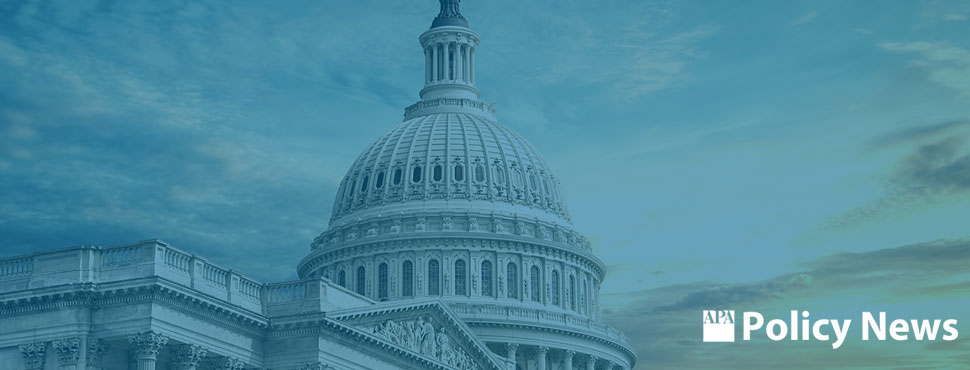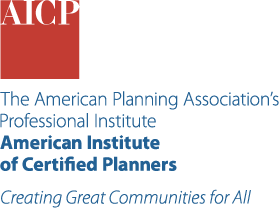Federal Impacts
Senate THUD Spending Bill Ignores Trump Budget, Funds Key Housing Programs

The Senate Appropriations Committee approved its FY26 Transportation, Housing and Urban Development spending bill (THUD) on July 24, 2025, in a bipartisan vote. The House Appropriations Committee had previously voted on its version.
Overall, the Senate bill provides more funding than the House Committee's version and continues funding for some key housing programs that have been proposed for elimination by the House.
Here is APA's breakdown of what's in the Senate version of the spending bill.
Housing
For the Department of Housing and Urban Development, the Senate THUD bill represents a $3.3 billion increase from FY25 and a $5.5 billion increase over the House version.
Notably, the Senate bill would maintain funding for CDBG, HOME, PRO Housing, and Choice Neighborhoods programs, calling for:
- $3.1 billion for CDBG
- $1.25 billion for HOME
- $60 million for PRO Housing
- $40 million for Choice Neighborhoods
The Trump administration's budget proposal had called for zero funding for those programs. The House bill protected CDBG but provided no funding for the other programs.
In the Senate THUD bill, Homeless Assistance Grants would see an increase to $4.5 billion, up from approximately $4 billion in FY25.
Like the House bill, the Senate's version also rejected a proposal by the administration to convert existing voucher and tenant assistance programs into a state block grant.
Transportation
On transportation programs, Senate appropriators generally came in with higher funding levels than their House counterparts.
Transportation funding is complicated by the use of so-called "advance appropriations" from the Infrastructure Investment and Jobs Act (IIJA). These funds, which run through FY26, were approved as part of IIJA but intended originally as a supplement to annual appropriations.
The House bill cuts "regular" funding for several programs that are slated to receive IIJA funds. The House version also shifts some of the IIJA funds out of some programs that had been scheduled to receive these advance appropriations. Meanwhile, the Senate largely maintained the IIJA framework.
The Senate approved $250 million and preserved the $1.5 billion in IIJA advance appropriations ($1.75 billion total) for the competitive multimodal BUILD grants.
The bill funded the transit Capital Investment Grant program at $3.55 billion in combined FY26 funding and advance IIJA appropriations. That represents a decrease from enacted FY25 levels, but a nearly $2 billion increase above levels in the House bill.
For overall highway program funding, the Senate bill represents an increase of $1.27 billion over the House THUD measure.
The Senate bill maintains funding for the Reconnecting Communities program with $65 million, a program not funded in the House bill.
And $9.8 million is also provided in the Senate THUD bill for the National Surface Transportation Innovation Finance Bureau.
In contrast to the House, the Senate bill increases Amtrak funding and does not include policy riders prohibiting funding for high-speed rail.
Other provisions in the measure include:
- Funding to help with transportation associated with the World Cup and the Olympics
- Requirements for DOT to issue updated guidance for the National Electric Vehicle Infrastructure (NEVI) formula program within 30 days and final guidance within 120 days
- Creation of a DOT-HUD interagency task force focused on accelerating transit-oriented development
Both the House and Senate THUD bills included earmarks for transportation and economic development projects. Earmarks were requested by both Democrats and Republicans, suggesting that such congressionally directed spending is bipartisan and perhaps seen as a way of circumventing funding uncertainty on the part of the administration.
Congressionally Directed Spending
Navigating Earmark Funding
An alternative, or perhaps a supplement, to either discretionary grants or formula-based funding may be congressionally directed spending, known as "earmarks." These are funds requested directly by a member of Congress for state or local initiatives.
What's Next?
The road ahead for THUD appropriations is unclear. Congress is out on its annual August recess, and when lawmakers return, they face a September 30 deadline for approving funding bills or facing a government shutdown.
One possible option is passing a Continuing Resolution to keep programs funded at existing levels to buy time to reach a broader compromise. Compromise will be required since the votes of at least some Democrats will be needed in the Senate for final passage. However, with Democrats angry about recissions and other unilateral funding shifts, it may be difficult to find enough trust and common ground for a compromise. At the same time, the bipartisan support for the Senate THUD offers some hope for an agreement.
Congress may also try to pass some funding bills in small packages while working on more controversial programs continues.
In any event, differences between the House and Senate approaches to transportation and housing programs will have to be reconciled. For the moment at least, it seems that both chambers are rejecting some of the largest changes and cuts proposed by the administration, but with overall lower funding levels, fiscal headwinds for the THUD program remain very much in the forecast.
Top image: iStock/Getty Images - benedek
ABOUT THE AUTHOR


